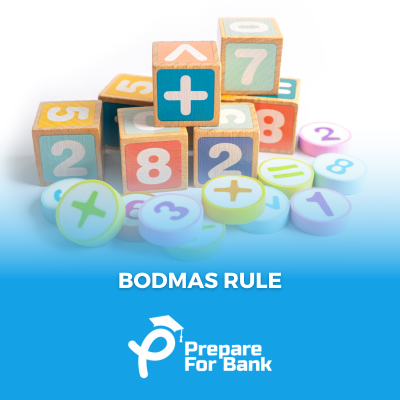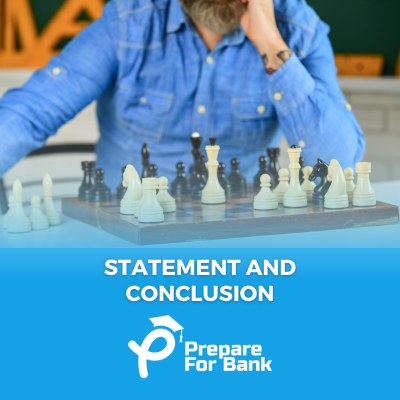BODMAS Rule: Sequence, Example, Practice Questions
BODMAS Rule helps in solving mathematical equations that require multiple arithmetic operations to perform, and are not easy to solve as compared to solving a single operation on two numbers.
Correct understanding and application of the BODMAS rule will give the correct answer else application of arithmetic operations in the wrong order will lead to the wrong answers and waste of time in solving more complex operations.
Nowadays, competitive exams are asking questions in which complex calculations, in which if we remember BODMAS Rule then it will lead to getting correct and faster results. A wrong application of BODMAS will result in the wrong answer and will also waste time and confidence.
BODMAS – Rule
BODMAS stands for arithmetic operations which are abbreviated as Bracket, Of, Division, Multiplication, Addition, and Subtraction. BODMAS is also known as PEMDAS which can be abbreviated as Parentheses, Exponents, Multiplication, Division, Addition, and Subtraction.
BODMAS or PEDMAS Rule can be explained as below:
- B or P Stands for Bracket or Parentheses : [{()}]
- O or E Stands for Of or Exponents: Of, Power (Squares or Cubes)
- D Stands for Division or Fraction operation.
- M Stands for the Multiplication operation.
- A Stands for the Addition operation.
- S Stands for the Subtraction operation.
BODMAS Sequence
Correct BODMAS Sequence for applying Bracket, Of, Division, Multiplication, Addition, and Subtraction. As per the name, the BODMAS sequence is also as per the name. Below is the sequence of BODMAS:
- First, we need to solve any Bracket in the given equations.
- Second, we need to solve and Of (also stands for multiplication) or Square or Cube or Power operation if given in the equation.
- The third operation we need to perform is the Division operation given in the equation.
- The fourth operation we need to perform is the Multiplication operation is given in the equation.
- The fifth operation we need to perform is Addition operation is given in the equation.
- The sixth operation we need to perform is the Subtraction operation given in the equation.
BODMAS Examples
Let’s understand with BODMAS examples as given below:
Example 1: 50 Of 5 + 80
As per BODMAS rule we’ll first solve Of Operation.
=> 50 x 5 + 80
=> 250 + 80
Second, we’ll solve the addition operation.
=> 330
Example 2: 96 Of (36 x 25 + 100) + 10 Of 300 – 100 + 500 / 50
As per BODMAS Rule we’ll first solve higher operations that are multiplication, inside Bracket / Parentheses.
Step 1. => 96 Of (900 + 100) + 10 Of 300 – 100 + 500 / 50
Step 2. =>96 Of 1000 + 10 Of 300 – 100 + 500 / 50
Now we’ll solve Of operation that is multiplication operation.
Step 3. => 96 x 1000 + 10 x 300 – 100 + 500 / 50
Step 4. => 96000 + 3000 – 100 + 500 / 50
Now we’ll solve Division operation.
Step 5. => 96000 + 3000 – 100 + 10
Now we’ll solve the Addition operation.
Step 6. => 96000 + 3000 + 10 – 100 {Note: Interchanged for better understanding.}
Step 7. => 99010 – 100
Now the final operation of subtraction.
Step 8. => 98910 {Correct Answer}
Word of Caution: Let’s make a small mistake in BODMAS calculation to understand it’s importance in getting the correct answer.
From the above example, let’s start with Step 5.
Step 5. =>96000 + 3000 – 100 + 10
Now we’ll solve the Addition operation.
Step 6. => 99000 – 110 {Note: Just perform addition without interchanging.}
Now the final operation of subtraction.
Step 7. => 98890 {Worng Answer}
From the above example, it’s clearly concluded that the importance of BODMAS Rule for getting correct answer is very essential.
BODMAS Practice Questions
Below are few practice question on BODMA Rule:
- 10 Of 36 / 9 + 140 – 200
- 387 / 3 Of 3 + 500 – 200
- 1600 / 160 / 5 + 5 Of 500
- 6400 / (16 x 25) x 20 + 100 – 10 Of 50
- 5 Of 36 + 200 / 25 x (36 / 2 Of 9) – 100
- 2400 / 5 Of 12 + 12 Of 24 – 400 x 3000 / 600
- (900 / 5 Of 18) Of 25 – 10 Of 1000 + 3000
- (1 / 2 + 1 / 4) Of 16
- 1 / 2 [{ 2 ( 1 + 2 )}10]
- 3600 / 10 {(12 – 6 ) + (24 – 12)}
FAQs
What is BODMAS Rule?
BODMAS rule defines the sequence or priority of arithmetic operations to perform on a given calculation.
What is the full form of BODMAS?
The full form of BODMAS is Bracket, Of, Division, Multiplication, Addition, and Subtraction
What happens if we don’t apply BODMAS Rule?
While performing mathematical calculations it’s essential to apply BODMAS Rule correctly. Applying it incorrectly or not using will result in wrong answers.
What is the full form of PEMDAS?
The full form of PEMDAS is Parentheses, Exponents, Multiplication, Division, Addition, and Subtraction.
What is a sequence in BODMAS Rule?
Sequence of BODMAS Rule is: First solve Brackets, then solve Of (multiplication or power), then solve Division, then solve Multiplication, then Addition and last Subtraction.
Final Words
Practicing the above questions for BODMAS Rule is not the end of your practice, but it’s the start of new journey to apply the BODMAS rule in arithmetic operations in correct and faster way. For cracking competitive exams one must practice BODMAS Rule and without calculator.
Courses you might be interested in
-
0 Lessons







